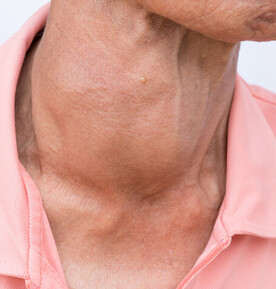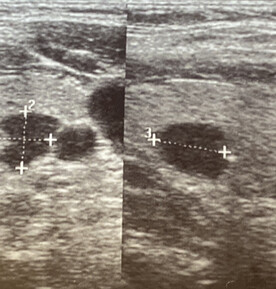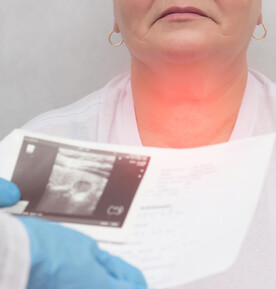Thyroid
Other Abnormalities of the Thyroid Gland
Individuals with a higher risk of developing thyroid disease include those with a family history of the condition, as well as those with underlying medical conditions such as pernicious anaemia, type 1 diabetes, lupus, rheumatoid arthritis, Gardner’s syndrome, Sjögren’s syndrome, and Turner syndrome. Additionally, the use of medications containing high levels of iodine, like amiodarone, can increase susceptibility. Age also plays a significant role, with individuals over 60, particularly women, being at greater risk. These factors contribute to a heightened likelihood of developing thyroid disorders, necessitating awareness and proactive management strategies for affected individuals.
Thyroid Scintigram
Also known as a thyroid isotope scan, the scintigram is a valuable diagnostic test used to evaluate the function of the thyroid gland, particularly when thyroid function is abnormal and helps identify nodules based on their metabolic activity. The scan provides valuable information about overall thyroid function and can help guide treatment decisions, especially in cases of abnormal thyroid hormone levels.
Firstly, a small amount of radioactive substance is injected into a vein, typically technetium-99m or iodine-123. This substance is specifically absorbed by the thyroid gland. Next, specialised imaging equipment, such as a gamma camera, is used to detect the radioactive substance in the thyroid gland. The camera captures images that show how the substance is distributed within the thyroid.
Active nodules within the thyroid gland appear as "hot" spots on the scan. These nodules have increased uptake of the radioactive substance, indicating higher metabolic activity. Hot nodules are often associated with hyperfunctioning conditions such as hyperthyroidism. Hot nodules are less likely to be cancerous and often do not require immediate intervention if they are not causing symptoms.
Inactive or less active areas within the thyroid gland appear as "cold" spots on the scan. Cold nodules have reduced or no uptake of the radioactive substance, suggesting lower metabolic activity which further implies an inactive gland indicating benign or malignant growths. Most thyroid nodules are cold and may require further investigation, such as fine needle aspiration biopsy (FNA), to assess for malignancy.
The thyroid scintigram plays a critical role in the evaluation and management of thyroid disorders, particularly in determining the nature of thyroid nodules and guiding appropriate treatment strategies.



